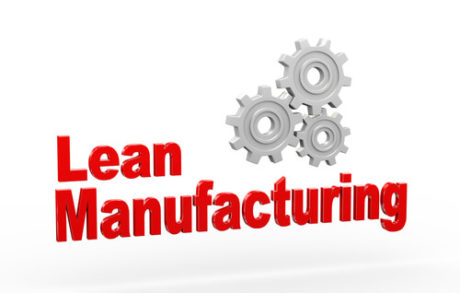Kieran Graham
Read More
Very professional courses. Great Administration assistance and high quality e-learning service.
Sarah Jennings
Read More
I did forex trading diploma. Very professional and detailed course.
Jordan Cooke
Read More
The course offered is excellent. I am glad to have taken it.














The global mark
et is increasingly pressuring businesses to improve the efficiency of their operations. Today’s warehouse management system is no exception. Using lean principles, warehouses
will see a remarkable improvement in organization and product flow as well as their ability to meet the demands of customers.
What is Warehouse Management?
Warehouse management is a system that supports the daily operations in a warehouse. Today’s warehouses have to manage the flow of material within the facility, as well as the flow of information throughout the supply chain. An effective warehouse management system helps businesses by:
The Challenges
A growing trend for pick-and-choose orders and a fluctuating market have created new challenges for warehouse management. Warehouses can no longer stockpile products and wait for customers to purchase from their predetermined supply. Instead, warehouses must continuously move new or updated products to meet an ever-changing demand.
Challenges encountered by warehouse management may include the following:
Poor layout: Some storage areas may be overfilled while others are underused, which makes it difficult to find supplies. There can be too much space between workstations, increasing the time it takes to move an order from station to station. And workers may have to excessively reach, bend, or stretch to complete their tasks.
Ineffective storage and transfer of supplies: Fast-moving items might be stored in a tough-to-reach space, increasing the time and labor it takes to resupply picking lanes.
Ineffective processes: Frequent defects may be caused by poor inventory management, missing or damaged materials, and mislabeled supplies.
Recurring slow periods in the supply chain: Workers must wait for materials to be resupplied before shipments can be processed. Approvals for shipments and new materials can take too long to process and orders backup.
The Benefits
Warehouses will receive many benefits by implementing lean manufacturing in their management system. Warehouses will be able to meet the changing requirements of their customers by improving their efficiency, reducing errors, maximizing the space available for supplies, and by pulling supplies based on customer demand. Other benefits include:
While warehouses face many difficult challenges, lean manufacturing tools can be used to overcome many of them. In particular, value stream mapping (VSM), 5S, and Kanban can be used to make warehouses more efficient.
VSM
Value stream mapping is a process that enables warehouse managers to understand how things are currently working. Workflow is visually mapped out and relationships among processes are clearly identified, enabling warehouse managers to:
By creating a visual map, warehouse managers can identify materials that are being stored ineffectively or handled too often. They can also improve the warehouse layout and storage system to reduce handling and improve how items are stored. For example, fast-moving items should be easy to reach, while slow-moving items can be placed towards the back of the warehouse or at the top of the storage rack.
5S
5S is a lean manufacturing tool that can improve warehouse efficiency by systematically organizing and cleaning the workspace, as well as standardizing work practices and procedures. The system includes five guidelines (five S’s) that can increase warehouse efficiency:
Visual communication is a key element for any lean warehouse management system. Labels and signs can be used to help organize the warehouse’s storage system and provide essential information, while floor marking can be used to designate where tools, equipment, and supplies should be placed. This creates a visual map that helps workers quickly find and store supplies and tools.
Lean Manufacturing Principles
In order to gain a competitive edge, many companies have adopted lean manufacturing (or lean thinking) as a keystone for success in today’s global market. Lean manufacturing has enabled businesses to increase production, reduce costs, improve quality, and increase profits by following five key principles: identify value, map the value stream, create flow, establish pull, and seek perfection.
Where Were Lean Manufacturing Principles Formed?
The lean manufacturing principles were formed in Japan. In an effort to improve sales and increase profit, Eiji Toyoda embarked on a journey to improve Toyota’s manufacturing processes. Inspired by his visit to the Ford facility in Michigan, he collaborated with Taiichi Ohno to develop a series of lean manufacturing tools. Collectively known as the Toyota Production System, these tools gained prominence in James Womack’s and Daniel Jones’ book, Lean Solutions, where the authors identified the five principles.
The Five Lean Manufacturing Principles
The five lean manufacturing principles are the foundation of Toyota’s success and can help businesses create products centered on what customers want.
Identify Value
The first lean principle, identifying value, is also the first step in the journey to become lean. This step requires businesses to define what customers value and how their products or services meet those values. In this case, value requires:
By designing products to meet specific needs, businesses will eliminate wasteful steps that may have been required for unwanted features. Design for Six Sigma (DFSS) is one method that can help businesses identify value. Using DFSS, companies can systematically define, measure, and analyze what their customers want. Companies can then design products tailored for their customers.
Map the Value Steam
The second lean manufacturing principle is mapping the value stream. A value stream is the complete life-cycle of a product, which includes the product’s design, the customers’ use of the product, and the disposal of the product.
This step requires companies to identify and map the product’s value stream. Lean tools like Value Stream Mapping (VSM) can be used to visually map out the entire product flow. Once the value stream is mapped, it will be easier to find and minimize steps that do not add value.
Create Flow
The third lean principle is creating flow. Efficient product flow requires items to move from production to shipping without interruption and can be achieved by strategically organizing the work floor. Every factor, from people and equipment to materials and shipping, must be taken into account to ensure products seamlessly move through the production process.
A well-organized work floor will result in reduced production time, inventory size, and material handling.
-

Add a note